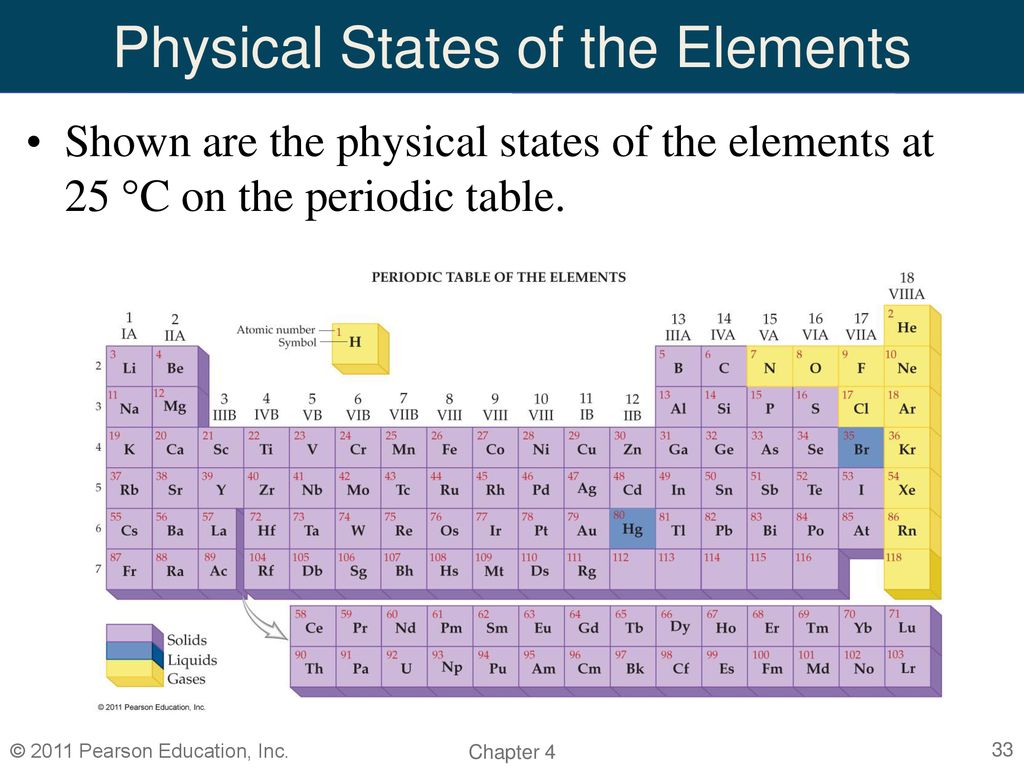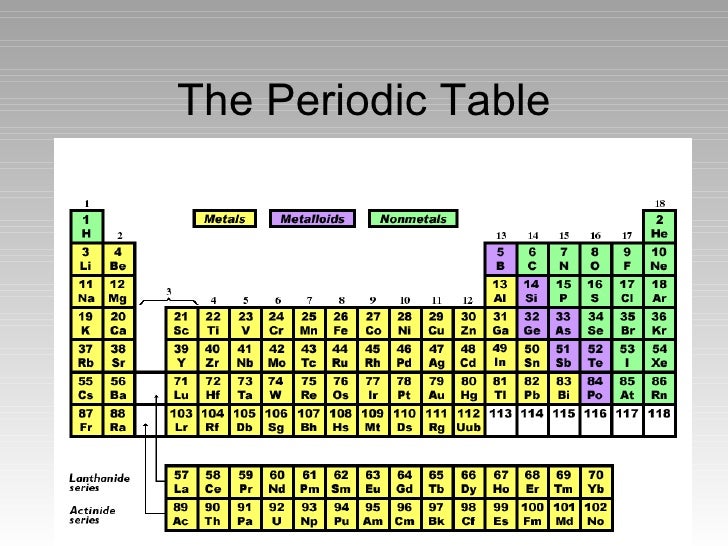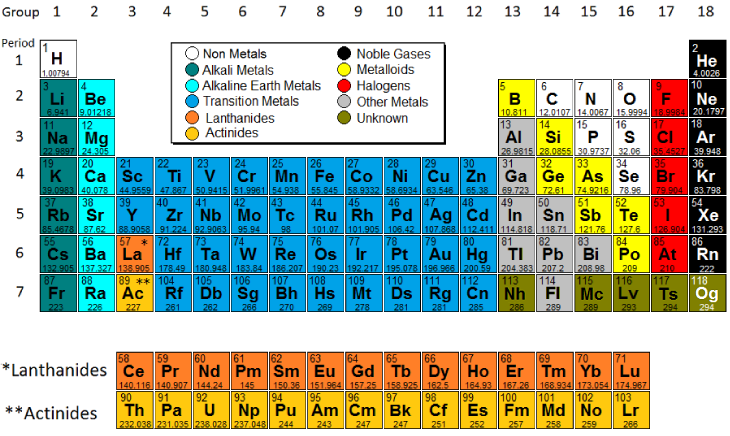118 different chemical elements are known to modern chemistry. 92 of these elements can be found in nature and the others can only be made in laboratories. The last natural element discovered was uranium in 1789. The first man-made element was technetium in 1937. Chemical elements are commonly arranged in the periodic table according to their atomic number.

Chemical elements can be briefly classified based on physical states. At room temperature and pressure, most elements are solids, only 11 are gases and 2 are liquids. Those two liquids elements are Mercury (liquid metal) and Bromine (liquid non-metal).

Elements can also be classified into metals which readily conduct electricity, nonmetals, which do not conduct electricity, and a few elements having intermediate properties in between those of metals and non-metals. These elements are called semi-metals (or metalloids). There are many more metals than non-metals.

A more refined classification is often shown in colored presentations of the periodic table. The version of this classification used in the periodic tables presented here includes: alkali metals, alkaline earth metals, halogens, lanthanides, actinides, transition metals, post-transition metals, metalloids, reactive nonmetals, and noble gases.
Comments
Post a Comment